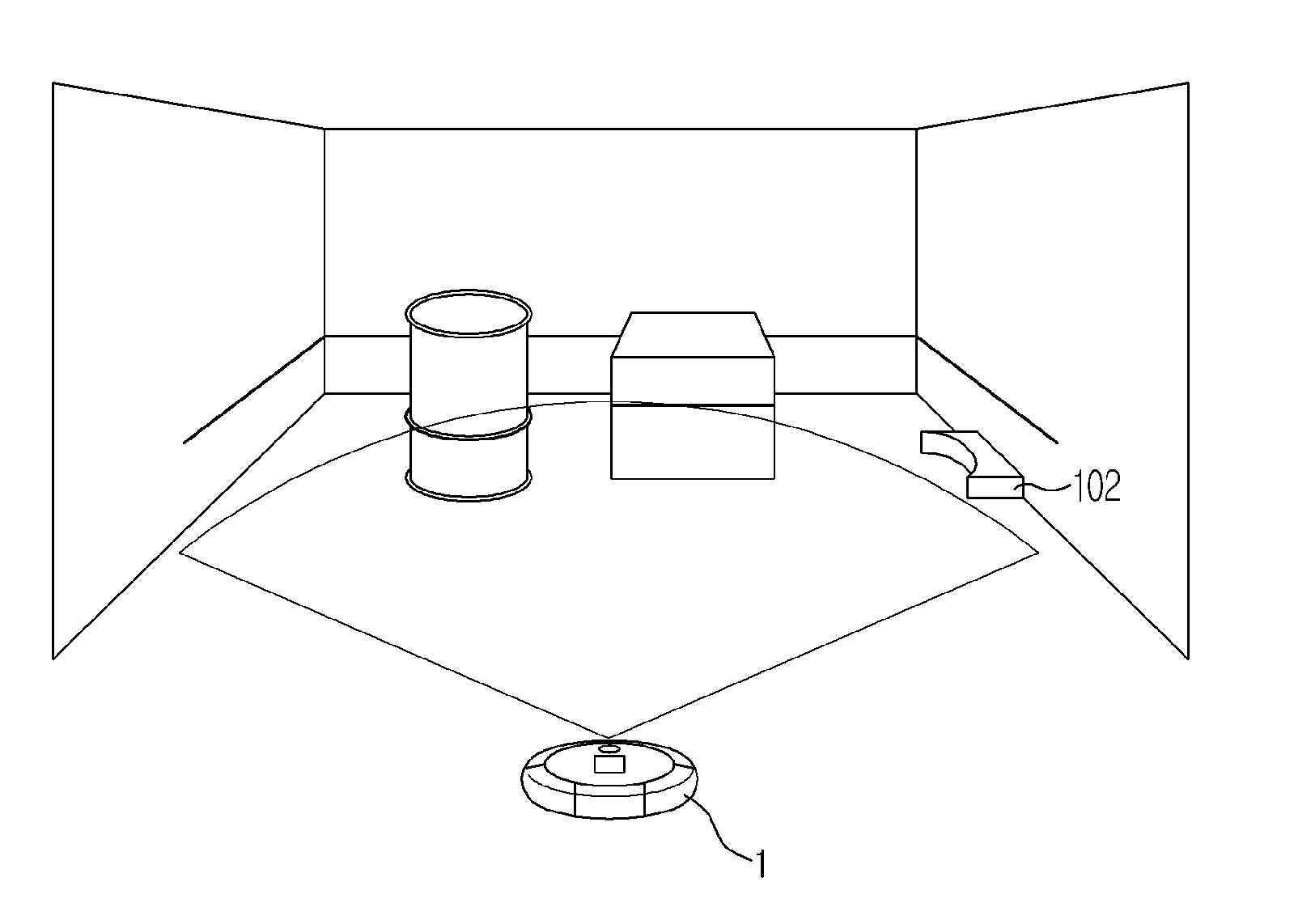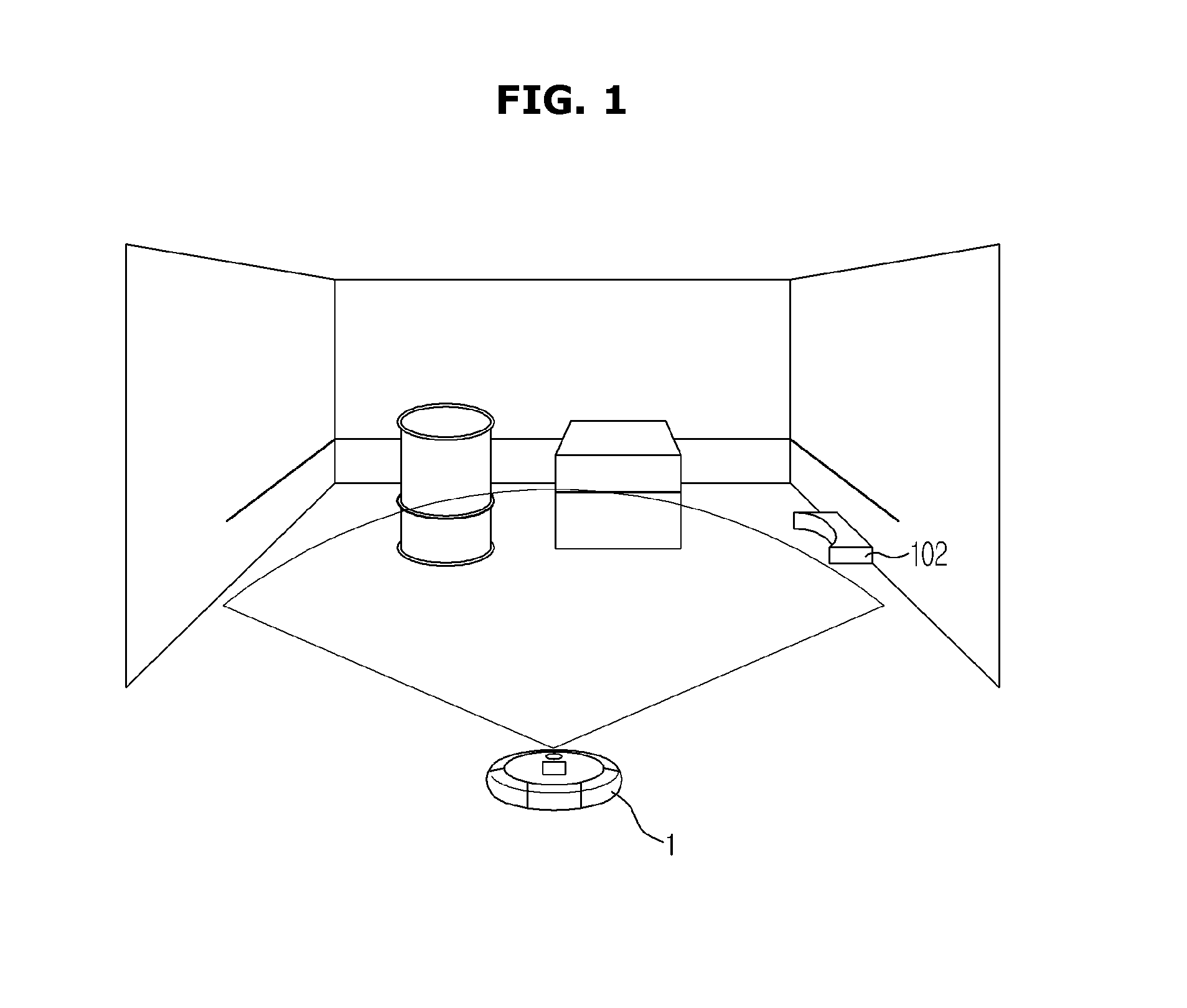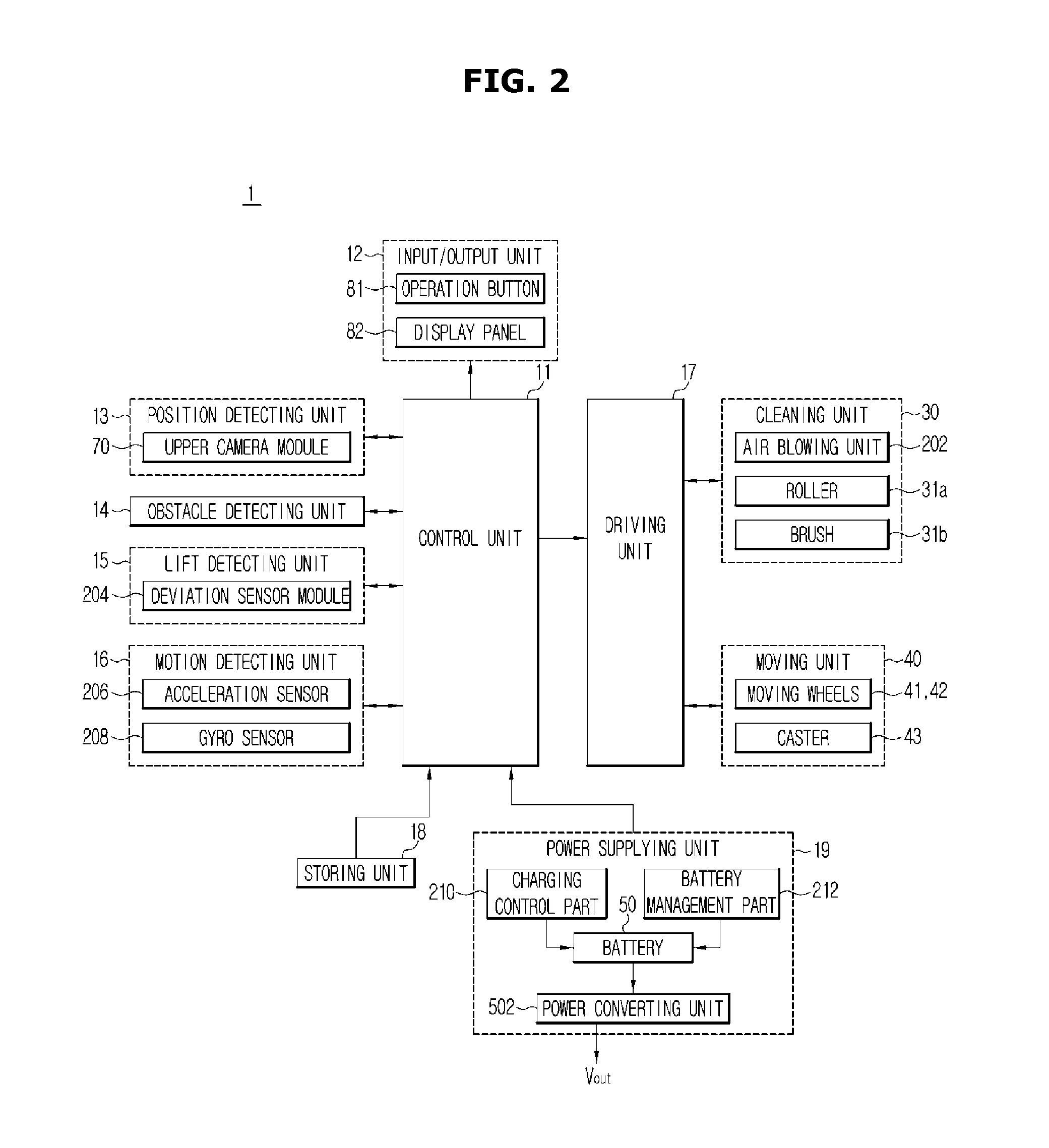Cleaning robot and control method thereof
a cleaning robot and robot control technology, applied in the field of cleaning robots, can solve the problems of limited power use, increased power consumption of batteries, and difficulty in freely moving on the area to be cleaned, and achieve the effect of improving power consumption efficiency and enhancing cleaning efficiency
- Summary
- Abstract
- Description
- Claims
- Application Information
AI Technical Summary
Benefits of technology
Problems solved by technology
Method used
Image
Examples
first embodiment
Cleaning Mode
[0069]FIGS. 6A to 6E and 7 are views respectively illustrating a method of controlling a cleaning robot in accordance with one or more embodiments, wherein FIGS. 6A to 6E are views respectively illustrating a movement trajectory of a cleaning robot in accordance with one or more embodiments, and FIG. 7 is a flowchart of a control method of a cleaning robot in accordance with one or more embodiments. A method of controlling a cleaning robot in accordance one or more embodiments will be described with reference to FIGS. 6A to 6E and 7.
[0070]In FIG. 6A, in order to perform the cleaning operation of a given cleaning area 602, the cleaning robot 1 may depart from a ‘current position=A’ and may perform the cleaning operation while moving along a route 606 of FIG. 6A (702 of FIG. 7). To this end, the cleaning robot 1 may convert the operation mode into the cleaning mode and may start the cleaning operation (704 of FIG. 7). The cleaning robot 1 may be in a state in which an ins...
second embodiment
Inspecting Mode and Cleaning Mode
[0078]FIGS. 8A to 8F and 9 are views respectively illustrating a control method of a cleaning robot in accordance with one or more embodiments, wherein FIGS. 8A to 8F are views respectively illustrating a movement trajectory of a cleaning robot in accordance with one or more embodiments, and FIG. 9 is a flowchart of a control method of a cleaning robot in accordance with one or more embodiments. A method of controlling a cleaning robot in accordance with one or more embodiments will be described with reference to FIGS. 8A to 8F and 9.
[0079]In FIG. 8A, in order to grasp a boundary and a size (surface area) of a given cleaning area 802 before performing the cleaning operation of the cleaning area 802, the cleaning robot 1 may depart from a ‘current position=A’ and may perform an inspecting operation while moving along a route of A, B, C, and D, like 808 of FIG. 8A (902 of FIG. 9). To this end, the cleaning robot 1 may convert the operation mode into th...
third embodiment
Returning Mode
[0085]FIGS. 10A, 10B, and 11 are views respectively illustrating a control method of a cleaning robot in accordance with one or more embodiments, wherein FIGS. 10A to 10B are views respectively illustrating a movement trajectory of a cleaning robot in accordance with one or more embodiments, and FIG. 11 is a flowchart of a control method of a cleaning robot in accordance with one or more embodiments. A method of controlling a cleaning robot in accordance with one or more embodiments will be described with reference to FIGS. 10A, 10B, and 11.
[0086]First, the cleaning robot 1 may perform the cleaning operation (1102 of FIG. 11). Here, the ‘performance of the cleaning operation’ may include all of a state immediately after starting of the cleaning operation, a state in the midst of the cleaning operation, and a state immediately after finishing of the cleaning operation. If it is determined that the battery 50 needs to be charged in one of the state immediately after star...
PUM
 Login to View More
Login to View More Abstract
Description
Claims
Application Information
 Login to View More
Login to View More - R&D
- Intellectual Property
- Life Sciences
- Materials
- Tech Scout
- Unparalleled Data Quality
- Higher Quality Content
- 60% Fewer Hallucinations
Browse by: Latest US Patents, China's latest patents, Technical Efficacy Thesaurus, Application Domain, Technology Topic, Popular Technical Reports.
© 2025 PatSnap. All rights reserved.Legal|Privacy policy|Modern Slavery Act Transparency Statement|Sitemap|About US| Contact US: help@patsnap.com



